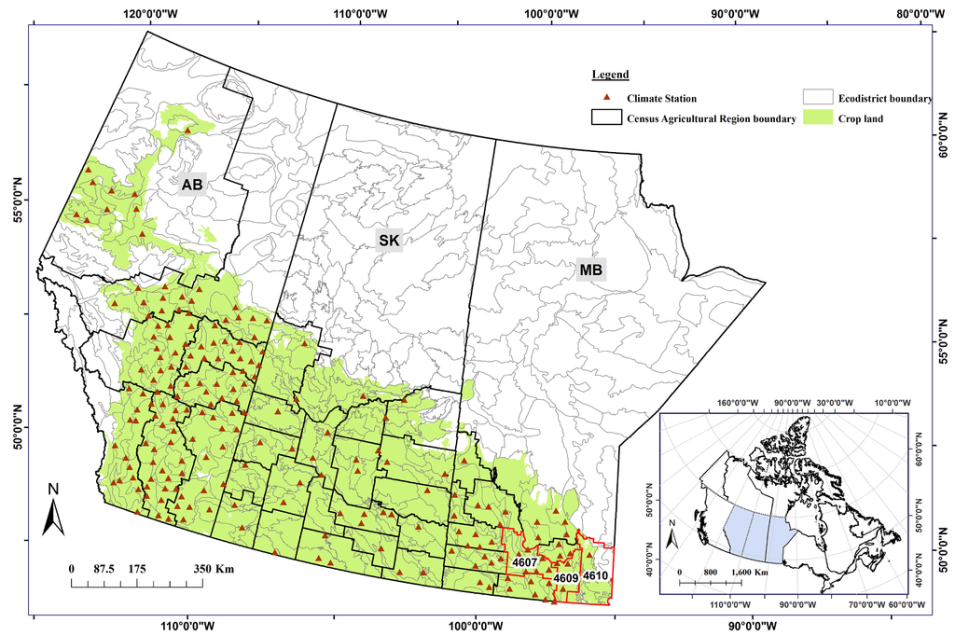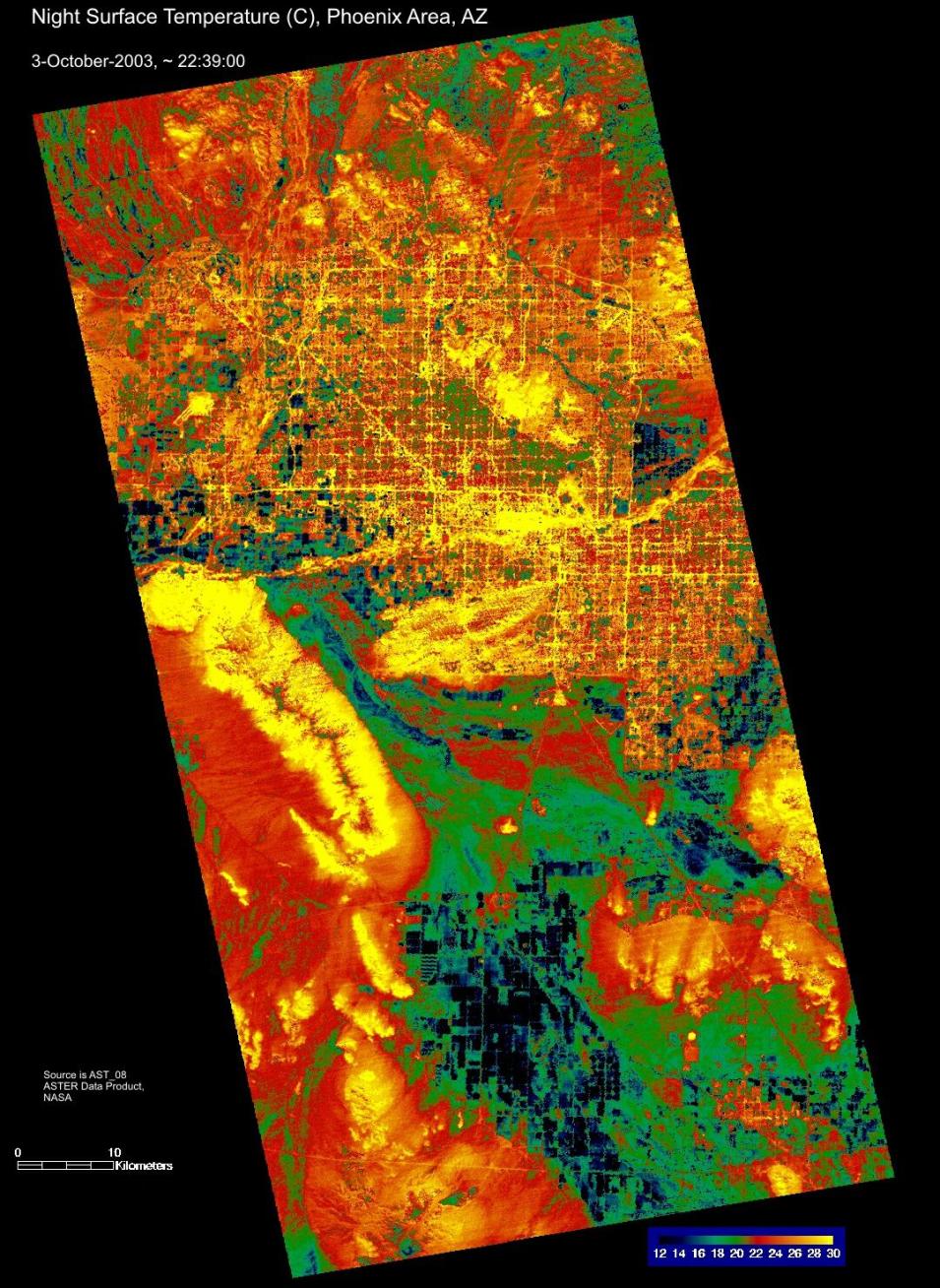Science Objectives
This study investigates the use of MODIS-derived vegetation indices (MOD13Q1) for forecasting spring wheat yield at the ecodistrict (ECD) scale in three provinces across western Canada with the Integrated Canadian Crop Yield Forecasters (ICCYF) for the 2000 to 2010 period. The study compares these forecasts and their accuracy to forecasts at the Census Agricultural Region (CAR) scale. An ECD is a subdivision of a single ecoregion and has specific climate, soil, landscape, and ecological aspects. CARs consist of neighboring census divisions.
Instruments Used
Agroclimate measurements (daily temperatures and precipitation, soil characteristics, and soil moisture) combined with MODIS derived Normalized Difference Vegetation Index (NDVI) and Enhanced Vegetation Index (EVI) are used as inputs for the in-season yield forecasting of spring wheat from 2000 through 2010.
Major Findings
Results show that both inputs (agroclimate plus MODIS-NDVI and agroclimate plus MODIS-EVI) equally predict spring wheat yields at the ECD scale. The CARs or coarser statistical units had poorer ICCYF performance as reported in previous studies. Therefore, this study found that the model performance improved at the finer ECD scale.
References
Publication Reference
Kouadio, L., Newlands, N.K., Davidson, A., Zhang, Y., and Chipanshi, A., 2014, Assessing the Performance of MODIS NDVI and EVI for Seasonal Crop Yield Forecasting at the Ecodistrict Scale: Remote Sensing, v. 6, no. 10, p. 10193–10214. doi:10.3390/Rs61010193.
Image References
Kouadio, L. et al., 2014; CC-BY-4.0
Tracking Elevation at a Coal Mine
In the study "Time-varying elevation change at the Centralia coal mine in Centralia, Washington (USA), constrained with InSAR, ASTER, and optical imagery" published in the IEEE Journal of Selected Topics in Applied Earth Observations and Remote Sensing, Prush and others (2014) use Advanced Spaceborne Thermal Emission and Reflection Radiometer (ASTER) and interferometric synthetic aperture radar (InSAR) instrument data to track elevation changes at the Centralia Coal Mine in Washington from 1971 to 2006.

